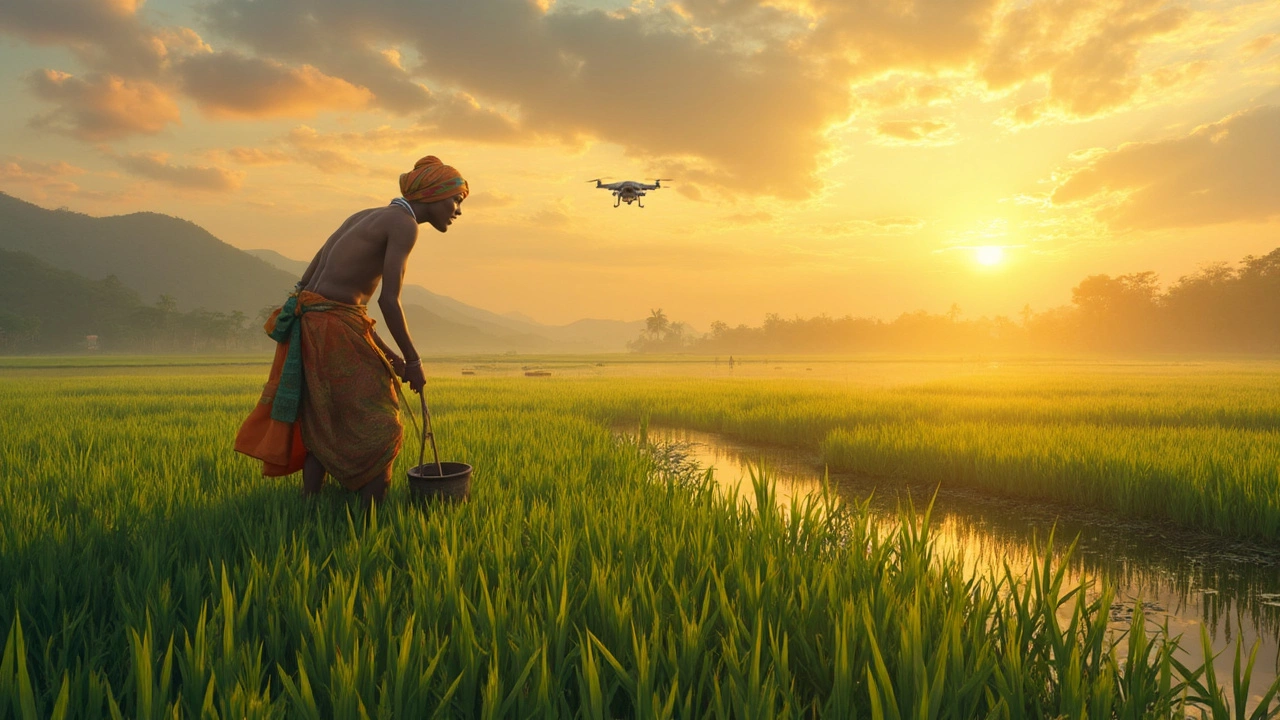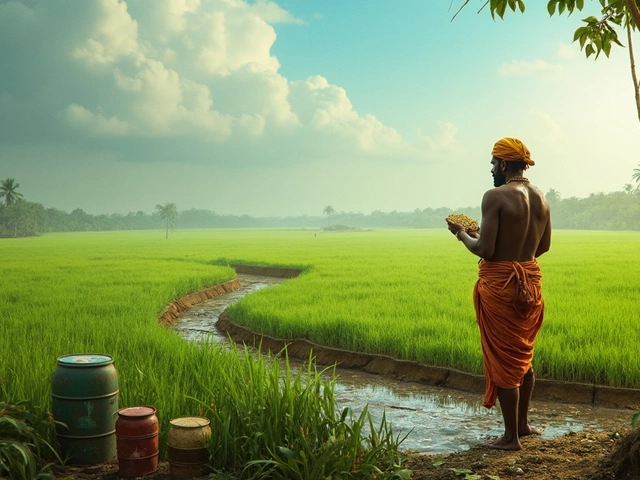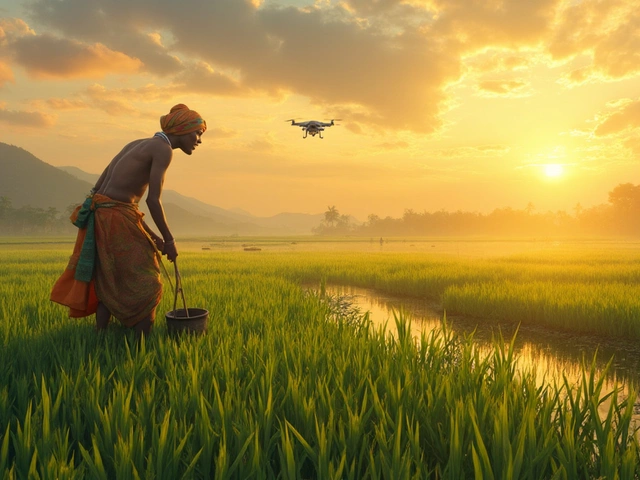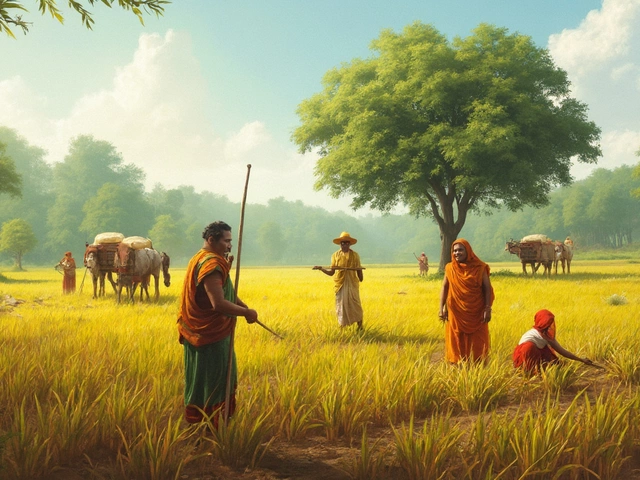Rice is not just the centerpiece on your dinner plate; it's one of the busiest crops in agriculture today. If you're wondering what makes rice a superstar in the fields, it's about more than just being a staple food. Modern farming has unlocked new ways to make rice grow faster and more efficiently. From groundbreaking hybrid varieties to tech-savvy farming techniques, rice is setting the pace.
So, why is rice quickly becoming the darling of crop growth? First off, let's chat about those hybrid varieties. They're bred to grow at lightning speed, use less water, and resist pesky pests. These traits make them perfect for meeting the high demand in our ever-growing world.
And guess what? Technology is playing a massive role here. Think drones for field monitoring or AI systems that optimize planting schedules. These innovations aren't just fancy gadgets; they’re changing the game for farmers by boosting yields and cutting costs.
- Introduction to Rice Cultivation
- Hybrid Varieties Leading the Way
- Technological Advancements in Farming
- Sustainability and Environmental Impact
- Practical Tips for Successful Cultivation
Introduction to Rice Cultivation
Rice, often the go-to grain around the world, thrives in fields from Asia to South America. It's not just an essential food item; it's a major economic product driving agriculture in many countries.
Why is it such a big deal? Well, rice cultivation employs over half the world’s population, directly or indirectly. With the global push for more food security, the demand for rice just keeps climbing, and for farmers, this means opportunity.
So, what's the first step in starting a rice farm? It usually starts with choosing the right rice variety. Depending on factors like climate and soil conditions, farmers pick varieties that either shoot up in rainy fields or thrive in drier conditions, thanks to new hybrid varieties. Tackling weather unpredictability head-on is a game-changer.
Getting Started with Farming Techniques
For successful rice farming, understanding your soil and water sources is critical. Typically, rice loves wet, marshy lands. But with sustainability in mind, irrigation systems are making it possible to grow rice in previously unsuitable areas.
- Testing your soil – Check its pH and nutrient richness before planting.
- Selecting the sowing method – Traditional transplanting is common, but direct seeding is gaining popularity for being quicker.
- Water management – Rice needs ample water. Efficient canals or controlled flooding can significantly boost yields.
And of course, technology steps in. Tools like GPS-guided tractors are becoming important in rice cultivation, offering precise planting and harvesting, saving time, and labor costs.
Key Statistics
| Year | Global Rice Production (million tons) |
|---|---|
| 2022 | 512 |
| 2023 | 520 |
| 2024 | 530 |
As you can see, rice production is on a rising trend, which doesn't seem to be slowing down anytime soon. With the continuous development of new methods and tech, the future of rice cultivation remains bright.
Hybrid Varieties Leading the Way
When it comes to rice cultivation, hybrid varieties are taking the spotlight for all the right reasons. These new strains are crafted in labs to grow faster, stronger, and with better yields. Imagine a rice plant that's not overly picky about water and isn't easily bullied by pests. Sounds ideal, right? That's exactly what these hybrids offer.
Let's dive into some specifics. Take the IR8 variety, for instance. It's often called the ‘miracle rice’ and for good reason. It matures much quicker than traditional varieties. This means farmers can harvest more frequently, meeting market demands without breaking a sweat.
The Science Behind Hybrids
Creating these hybrids involves clever breeding techniques. Scientists combine traits from different rice strains to craft plants that thrive under various conditions. It's like nature’s version of a perfect match! These hybrids are not just a product of human intervention; they are smarter versions of what nature intends.
Benefits of Hybrid Varieties
- Faster Maturity: Quick growth cycles lead to more harvests in a year.
- Resilience: Better resistance to diseases and pests reduces the reliance on harmful pesticides.
- Water Efficiency: Some varieties need less water, perfect for areas facing water scarcity.
If you’re convinced that hybrid rice is the way forward, you're not alone. Farmers worldwide are embracing these varieties, leading to an uptick in agriculture outputs. And the numbers back it up. Studies show that hybrid rice can yield up to 30% more grains than traditional types. That's a huge boost!

Technological Advancements in Farming
Technology is shaking up the world of rice cultivation and it's pretty fascinating to watch. Once upon a time, farmers relied on gut feeling and experience alone, but now, they're backed by some serious tech wizardry.
Smart Drones and Precision Farming
Let's start with drones. These aren't the ones you'd use for capturing cool vacation pics; they're specifically built for agriculture. Farmers are sending them up to get a bird's-eye view of their fields. Drones equipped with special sensors can monitor the health of rice crops, check water levels, and even spot diseases early. This means less guesswork and more efficient use of resources.
AI and Big Data
Remember when we thought AI was just science fiction? Now it's an everyday tool, especially in agriculture. Farmers use AI to analyze tons of data. This data helps predict the best times to plant and harvest, ensuring the crops get the most suitable weather conditions. It’s like having a meteorologist and a crop specialist right in your back pocket.
Automated Machinery
Then there’s the machinery. Ever seen a driverless tractor? These smart machines can plant, water, and even harvest rice, all without breaking a sweat. It reduces the need for labor and speeds up the whole process.
Benefits and Growth
| Technology | Improvement in Yield (%) |
|---|---|
| Drones | 15 |
| AI Analysis | 20 |
| Automated Machinery | 25 |
This tech isn't just about making things easier; it's about making them better. The use of these technologies in rice farming has increased yield by significant margins according to recent studies. It's all about doing more with less – less time, less effort, and fewer resources.
Whether you're an experienced farmer or new to agriculture, embracing these changes can set you up for success. The future of rice cultivation looks promising, and technology is at the heart of this transformation.
Sustainability and Environmental Impact
In the world of rice cultivation, going green is becoming more than a trend—it's a necessity. As countries ramp up their rice production, sustainability practices are key to keeping our planet in shape. Many farmers are realizing that efficient farming doesn't just mean more crops; it's also about being kind to Mother Earth.
Let's talk about water management, a biggie in the rice world. Traditional rice farming uses about 2,500 liters per kilo of rice produced. That's hefty, right? Recent advancements have seen a shift to 'alternate wetting and drying' methods that significantly reduce water usage without sacrificing yield.
Reducing Emissions
Here's something else that's cooking in the rice fields—reducing methane emissions. This is major since rice paddies are known for emitting this potent greenhouse gas. Researchers have found that alternating wet and dry soil not only saves water but also cuts down these emissions. A win-win!
Soil Health and Crop Rotation
Maintaining healthy soil is another part of the eco-friendly puzzle. Techniques like crop rotation and organic fertilizers improve soil nutrients and reduce reliance on chemical inputs. Happier soil equals healthier crops.
Eco-Friendly Technology
Enter technology again, but this time with a green twist. From smart irrigation systems to low-energy input fertilizers, tech is making it easier for farmers to adopt sustainable practices.
| Country | Water Use Reduction with Modified Techniques |
|---|---|
| Vietnam | 30% |
| India | 25% |
| Philippines | 28% |
Farmers in countries like Vietnam, India, and the Philippines are witnessing water savings between 25% and 30% thanks to these innovative practices. It's amazing what a bit of knowledge and a willingness to change can achieve.
Through efforts in sustainability, not only is the environment being protected, but rice farmers are finding better yields and saving on costs. It's all about finding that balance between growth and good stewardship of our natural resources.
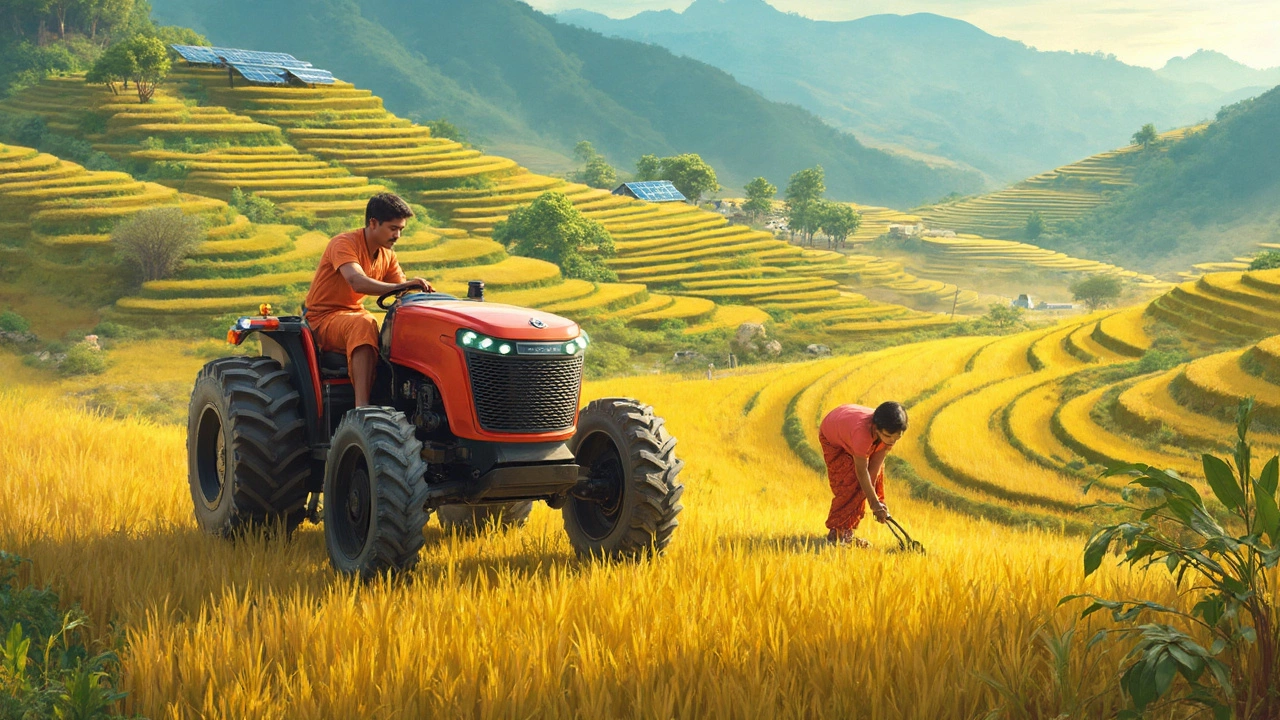
Practical Tips for Successful Cultivation
If you’re all set to dive into the world of rice cultivation, getting everything just right can make a world of difference. It’s not just about planting seeds; it’s about knowing your stuff and using every tool at your disposal.
Plan with Precision
Firstly, timing is everything. Make sure to plant the seeds at the right time of the year, usually just before the monsoons. The moist environment works wonders; however, late planting might lead to disappointing yields.
Choose the Right Variety
Hybrid varieties can be your secret weapon. They're engineered to grow faster, resist diseases, and yield more. As per Dr. James Rhodes, an agriculture expert,
“Hybrid rice has changed the landscape of farming, offering farmers a better shot at overcoming environmental challenges.”
Water Management is Key
Rice needs water, but not too much. Fields should be level to ensure even water coverage. Invest in a decent system that controls irrigation to avoid wastage and ensure your water bills don’t skyrocket.
Pest Control Precision
Pests can ruin your day—or your crops. Using natural pest control methods like deploying beneficial insects can keep your fields healthier. If you must use pesticides, make sure they're the right fit for your specific pest issues.
Harvest at the Right Moment
Timing isn’t just key for planting; it matters for harvesting too. Rice is typically ready between 3-6 months based on the variety. Harvesting at just the right moment maximizes yield and quality.
Here’s a quick checklist to keep you on track:
- Ensure fields are level for even water coverage
- Select pest-resistant hybrid varieties
- Monitor fields regularly for pest activity
- Start preparing for harvest once grains turn golden
Track Your Progress
Keeping tabs on each stage of rice cultivation isn't just for geeks. Track your progress and note what works and what doesn’t. This way, you'll improve with each planting season.
Take these tips to heart, and you'll not only be growing crops but also growing your skills as a top-notch farmer!
